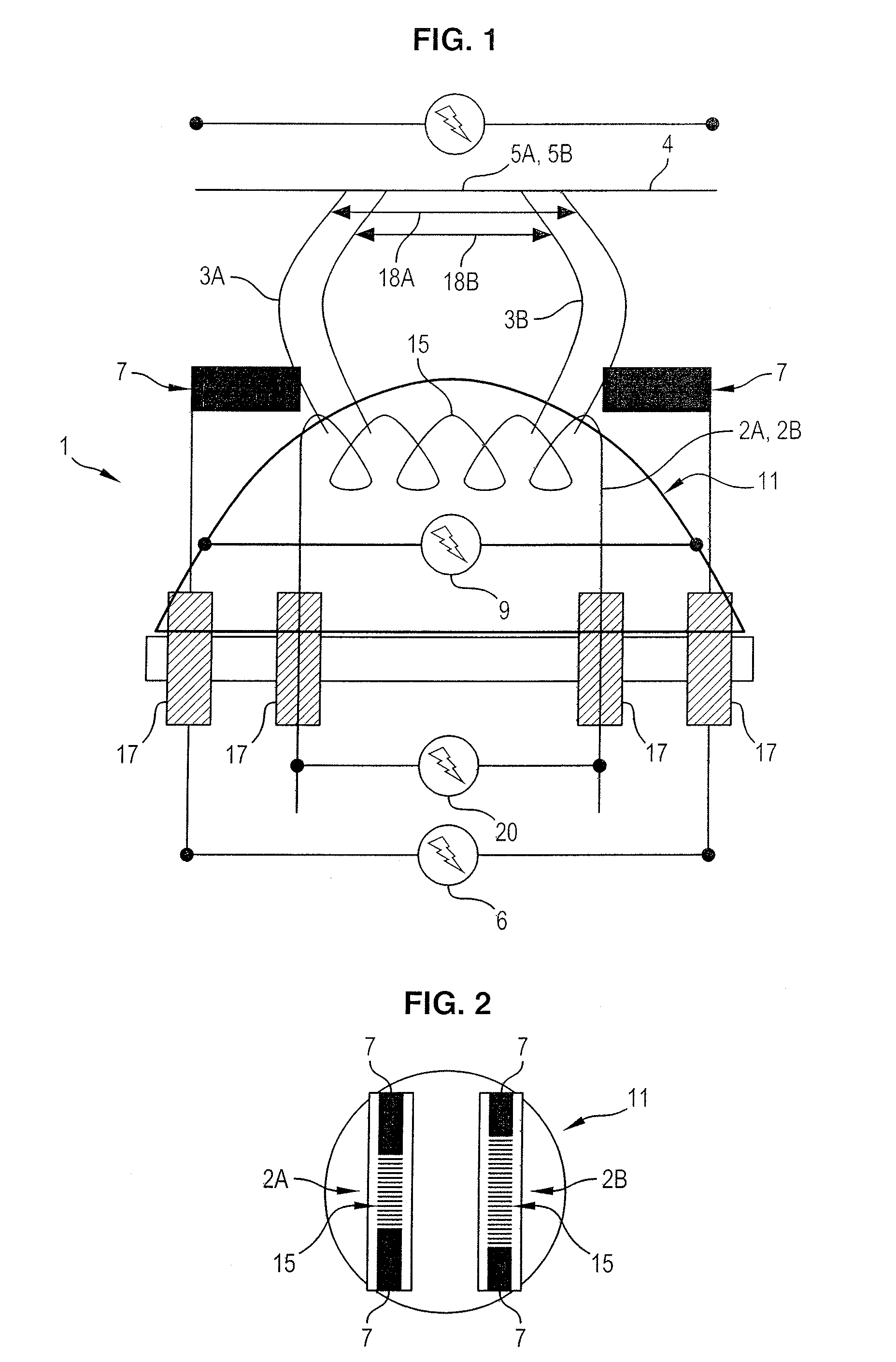Method to control the emission of a beam of electrons in a cathode, corresponding cathode, tube and imaging system
a technology of electron beam and emission device, which is applied in the direction of x-ray tube multi-cathode assembly, electric discharge tube, basic electric elements, etc., can solve the problems of filament breaking, increasing temperature to the detriment of the lifetime of the emission device, and the cathode is subject to various contradictory constraints, so as to reduce the focal spot of an electron beam, extend the lifetime of the emission device, and reduce the size of the electron beam.
- Summary
- Abstract
- Description
- Claims
- Application Information
AI Technical Summary
Benefits of technology
Problems solved by technology
Method used
Image
Examples
Embodiment Construction
[0034]FIGS. 1 and 2 show a diagram of a cathode 1 according to the invention.
[0035]The cathode 1 comprises at least one emission device 2A capable of emitting a beam of electrons 3A. The cathode 1 comprises as many emission devices as required.
[0036]In general, the emission device 2A comprises an emission filament 15, in which an electric current of several amperes is passed (e.g. 6 amperes) to heat said emission filament 15, which allows generation of a beam 3A of electrons. The filament 15 is heated to high temperature, higher than 2000° C. The filament 15 is typically a coiled tungsten wire.
[0037]The beam 3A of electrons is accelerated in the vacuum towards an anode 4. Acceleration of the beam is obtained by applying an electric voltage difference between the cathode 1 and the anode 4.
[0038]One solution consists of applying a negative acceleration voltage 20 in the order of −75 kV to the emission device 2A, and a positive electric voltage in the order of +75 kV to the anode 4, th...
PUM
 Login to View More
Login to View More Abstract
Description
Claims
Application Information
 Login to View More
Login to View More - R&D
- Intellectual Property
- Life Sciences
- Materials
- Tech Scout
- Unparalleled Data Quality
- Higher Quality Content
- 60% Fewer Hallucinations
Browse by: Latest US Patents, China's latest patents, Technical Efficacy Thesaurus, Application Domain, Technology Topic, Popular Technical Reports.
© 2025 PatSnap. All rights reserved.Legal|Privacy policy|Modern Slavery Act Transparency Statement|Sitemap|About US| Contact US: help@patsnap.com



